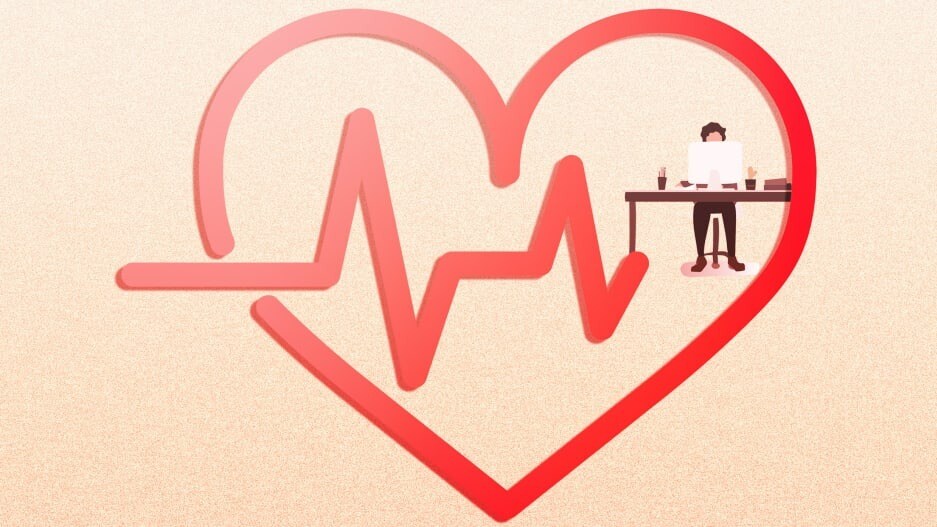- | 8:00 am
The power of work to influence health and longevity
More than providing just a paycheck, employers can—and should—improve worker health.

How we earn a living influences how we experience life. Employers do not just provide a paycheck—employers have great power (and thus great responsibility) to positively influence people’s health and the communities in which they live. In fact, where employees live is a strong predictor for how healthy they are and how long they will live.
According to the 2023 Edelman Trust Barometer, only 50% of Americans report being in good health. That also means half of Americans in the United States feel they are in poor to bad health. However, when I talk about health, it’s more than just physical, and employers can do something about it. Employment is connected to our sense of purpose and meaning. It can help foster social connection while reducing isolation and loneliness.
Employment can provide the income and health insurance we need to care for ourselves and our families at the most basic levels, including food and shelter. Our job contributes to our physical safety, but it can also expose us to environmental hazards and occupational risks, which positively or negatively impact our mental health and financial security. What we do for a living is a social driver of health—creating a ripple of concentric rings and interconnected systems.
WHY DOES IT MATTER?
For every three minutes of our existence, at least one of those minutes is directly occupational. That’s significant, without even considering all the other facets of life related to our jobs (commuting, meal choices, how often we exercise, stress, burnout, etc.)
A study from the Integrated Benefit Institute found that poor worker health costs U.S. employers $575 billion a year, including lost productivity due to worker absence, and chronic conditions and injuries leading to workers compensation. The ramifications of an unhealthy work environment are acute.
In 2021, the U.S. experienced more than 2.6 million nonfatal workplace injuries or illnesses and, tragically, almost 5,200 fatalities. These result from handling heavy loads, repetitive lifting, exposure to environmental toxins, or distracting conditions. Overwork and inadequate rest exacerbates physical health hazards; 13% of workplace accidents can be attributed to fatigue. Even the way we work matters. For office workers, a sedentary lifestyle contributes to health concerns such as heart disease, cancer, diabetes, weaker leg muscles, depression, anxiety, dementia, and more: Sitting is the new smoking, according to Mayo Clinic.
But let’s not discount the emotional and mental well-being effects of work. A quick scroll on LinkedIn shows no shortage of individual experiences with employment stressors such as job demands, long working hours, lack of flexibility and work-life balance, poor or toxic management, interpersonal conflict, and unemployment, coupled with workplace inequities such as racism, ageism, and sexism.
These stressors take their toll on our minds and bodies, increasing the risk for mortality and depression, while contributing to coping mechanisms such as smoking or substance abuse. The negative social and mental health aspects of the workplace cause $190 million in incremental healthcare costs—or 5%-8% of annual healthcare expenses—and are associated with 120,000 excess deaths per year.
As CEO of an organization that works closely with business, government, and thousands of nonprofits, we’re working hard every day, so every person in every community can live their healthiest life. It would be remiss for me not to emphasize that these stressors and challenges are not demographic-blind. In fact, 10%-38% of life expectancy discrepancies across groups can be explained by different workplace conditions.
Not all jobs are created equal. Some work requires shifts well outside the 9-5, while others necessitate high levels of physical exertion or risky exposure. Many jobs don’t pay a living wage, let alone provide healthcare benefits. Such positions are frequently held by people of color or those born outside the U.S. Employers can play a meaningful role in closing these gaps. In fact, according to the Harvard Business Review, the U.S. economy could benefit by $320 billion if we addressed inequities in health, which currently contribute to Black, Hispanic, and Asian employees missing work more often.
WHAT ARE THE BUSINESS BENEFITS OF HEALTHIER EMPLOYEES?
In addition to lost revenue and slowed productivity from workers’ poor health, the opposite is also true. By encouraging health and well-being for all employees, employers will see tangible, substantial benefits of a healthier workforce and healthier communities: employee recruitment, retention, engagement, productivity, and innovation.
Healthier employees can and want to work and earn longer—and this means increased consumer spending and decreased healthcare costs. According to AARP, companies with high health and wellness assessment scores even had higher stock prices. These clear business and society benefits make a healthy workforce both sustainable and desirable for businesses, communities, and the world.
WHAT ORGANIZATIONS CAN DO SO WORK IS A DRIVER FOR HEALTH, NOT A DETRIMENT TO IT
We must urgently address national employment policy, though this is a considerable undertaking and will take time. Examples include equitable wages, parental leave, connecting employees to social services, and legislation such as the Improving Social Determinants of Health Act of 2021.
Management is also key to employee health and well-being. Organizations should develop, as part of their talent and retention strategy, innovative policies, practices, and programs that support the total health and well-being of their workforce.
This includes compensation and benefits as well as more complex issues, such as covering educational opportunities and upskilling for lower-wage workers, or looking for gaps in coverage such as lack of transportation or access to care, or covering the cost of doulas to address the maternal health crisis. This also means providing a safe, flexible, and equitable workplace where employees can do their best work while managing their personal lives. Employers must begin to think about innovation to ensure their employees’ health and well-being comes first.
One easy way to get started is through social impact programs and Employee Resource Groups (ERGs). These groups create a sense of belonging and community that give employees a voice, plus they can help mitigate stress and increase engagement. ERGs dedicated to wellness, inclusion, or social impact are beneficial, especially when there is demonstrable action taken by senior leadership to address the challenges raised.
Employees want action and to feel they are part of driving solutions. Opportunities to volunteer and give back have a demonstrated positive effect on well-being as well. Studies show that volunteer opportunities related to overall social good may reduce cardiovascular disease risk, including reducing blood pressure; and overall, these types of programs are shown to lower mortality rates. Volunteering can also reduce depression and anxiety, helping people feel more connected and contributing positively to our communities.
PARTING THOUGHT
When we think of the adage, “working to live versus living to work,” we have to get honest with ourselves and acknowledge that these two aren’t mutually exclusive. Our work is inextricably connected to our quality—and quantity—of life. Taking a holistic view of well-being pays off for everyone: individuals, employers, communities, countries, and our world. What if companies started getting competitive about who has the healthiest and happiest employees? Imagine what that might do for us all.







































